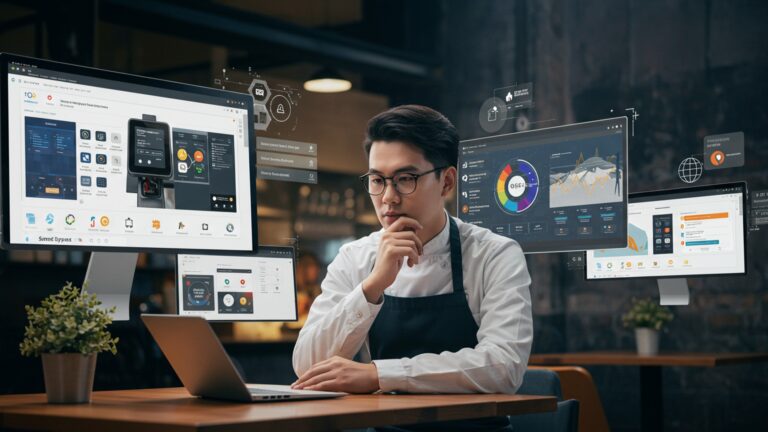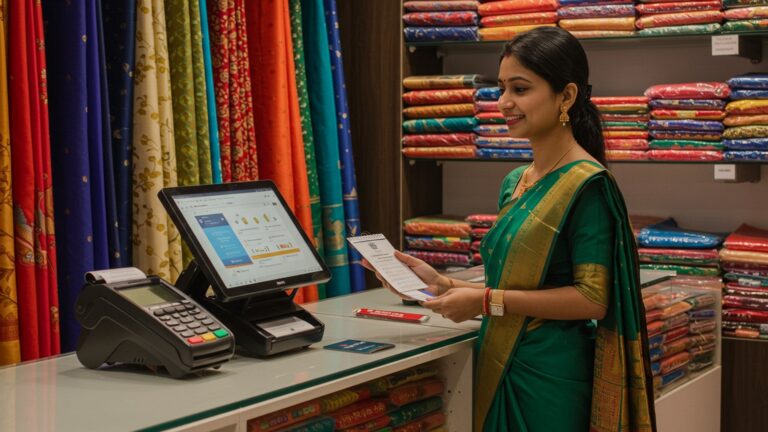5 Key Questions to Ask Before Buying Restaurant POS Software
The modern restaurant landscape demands more than a simple cash register; robust Restaurant POS software now orchestrates everything from dynamic menu management and kitchen display systems to integrated online ordering and intricate loyalty programs. With cloud-native solutions leveraging AI for predictive analytics becoming standard, selecting the right system is a strategic imperative, not just an operational necessity. A misstep here can lead to crippling data silos, inefficient staff workflows. a fragmented customer experience, especially as third-party delivery integrations and contactless payments dominate post-pandemic operations.

1. What Core Features Are Essential for My Restaurant’s Operations?
When embarking on the journey to select new Restaurant POS software, the first and most critical step is to meticulously evaluate its core functionalities against your specific operational needs. A Point of Sale (POS) system is no longer just a cash register; it’s the central nervous system of your establishment, orchestrating everything from order taking to inventory management.
Defining Key POS Features:
- Order Management: This is the bedrock of any restaurant POS. It encompasses intuitive order entry, table management (for dine-in), split checks, modifiers (e. g. , “no onions,” “extra cheese”). seamless communication with the kitchen display system (KDS) or printers. A robust system should minimize errors and speed up service.
- Inventory Management: Crucial for cost control and waste reduction. This feature tracks ingredients, alerts you when stock is low, helps calculate food costs. can even suggest reorder points. Without effective inventory tools, margins can quickly erode. For instance, a small café owner I spoke with dramatically reduced their daily waste of milk and coffee beans after implementing a POS with real-time inventory tracking, realizing savings of nearly 10% on their weekly supplies.
- Reporting & Analytics: Beyond just processing transactions, top-tier Restaurant POS software offers insightful reports on sales trends, peak hours, popular menu items, employee performance. more. This data empowers you to make informed decisions, optimize staffing, refine your menu. identify opportunities for growth.
- Employee Management: Includes time clock functionality, shift scheduling, payroll integration. performance tracking. This streamlines HR tasks and ensures fair compensation.
- Customer Relationship Management (CRM): Features like loyalty programs, gift card management. customer databases help you grasp your clientele better, personalize offers. build lasting relationships.
Comparison of Feature Tiers:
Not all POS systems are created equal. providers often offer tiered packages. Here’s a simplified comparison:
| Feature Tier | Common Inclusions | Best For |
|---|---|---|
| Basic | Order processing, basic reporting, payment processing. | Small cafes, food trucks, quick-service with minimal inventory needs. |
| Standard | All Basic features + inventory management, employee tracking, advanced reporting, table management. | Full-service restaurants, bars, multi-location operations. |
| Advanced/Enterprise | All Standard features + CRM (loyalty programs), advanced integrations (e. g. , accounting, delivery platforms), multi-location management, robust analytics. | Large restaurant groups, franchises, high-volume establishments seeking extensive automation. |
Actionable Takeaway: Before even looking at software, list your “must-have” features, “nice-to-have” features. “future-proof” features. This clarity will guide your selection and prevent overspending on unnecessary functionalities or, worse, underspending on essential ones.
2. Is a Cloud-Based or On-Premise Solution the Right Fit for My Business?
The architecture of your Restaurant POS software significantly impacts its cost, accessibility, maintenance. scalability. The primary choice lies between cloud-based (SaaS) and on-premise solutions, each with distinct advantages and disadvantages.
Understanding Deployment Models:
- Cloud-Based POS: Also known as Software-as-a-Service (SaaS) or web-based POS, this system operates entirely over the internet. The software and data are hosted on the vendor’s remote servers. You access it via a web browser or an app on a tablet/smartphone.
- On-Premise POS: This traditional model involves installing the software directly on your restaurant’s local servers and hardware. Your data resides within your own physical premises.
Key Differences and Considerations:
Let’s compare the two models:
| Feature | Cloud-Based POS | On-Premise POS |
|---|---|---|
| Initial Cost | Lower (subscription model, minimal hardware investment) | Higher (upfront software license, server hardware, installation) |
| Ongoing Costs | Monthly/annual subscription fees, internet service | Maintenance, IT support, software updates, hardware upgrades, electricity for servers |
| Accessibility | Anywhere, anytime with internet connection (e. g. , managing from home, off-site reporting) | Limited to local network, remote access often requires complex setup (VPN) |
| Updates & Maintenance | Automatic updates by vendor, minimal IT involvement for restaurant | Manual updates, requires internal IT or vendor technician, potential downtime |
| Data Security & Backup | Managed by vendor (often with professional-grade security), automatic backups | Restaurant’s responsibility, requires dedicated IT resources, potential for data loss if not managed properly |
| Scalability | Easily scalable (add/remove terminals, locations with subscription adjustment) | Requires hardware upgrades, additional software licenses, more complex for expansion |
| Internet Dependence | High (though many offer offline modes for basic functionality) | Low (operates locally, internet needed primarily for payment processing/integrations) |
Real-world Application: Consider a burgeoning food truck business. A cloud-based Restaurant POS software would offer unparalleled flexibility, allowing the owner to manage sales, inventory. staff from anywhere, even between different locations. Conversely, a large, established fine-dining restaurant with strict data control policies and an in-house IT team might prefer the perceived control and customization of an on-premise system.
Actionable Takeaway: Assess your budget, IT capabilities, growth plans. desired flexibility. Cloud is often favored for its lower barrier to entry and ease of management, while on-premise suits those with specific customization needs, robust IT infrastructure. a preference for local data control.
3. How Well Does the POS Integrate with My Other Essential Restaurant Systems?
Modern restaurant operations rely on a suite of specialized software tools. Your Restaurant POS software shouldn’t operate in a silo; its ability to seamlessly integrate with other crucial systems is paramount for efficiency, data consistency. a unified operational overview.
Understanding Integrations:
Integration refers to the ability of two or more software applications to communicate and share data with each other. For a restaurant, this typically involves connecting the POS with:
- Payment Processors: This is non-negotiable. Your POS must connect with EMV (Europay, MasterCard, Visa) compliant and PCI DSS (Payment Card Industry Data Security Standard) compliant payment terminals to securely process credit and debit card transactions. EMV chips add an extra layer of security, reducing fraud, while PCI DSS ensures sensitive cardholder data is protected.
- Online Ordering & Delivery Platforms: In today’s landscape, integrating with services like Uber Eats, DoorDash, or your own online ordering system prevents manual order entry errors and streamlines kitchen workflows. Without this, staff spend valuable time re-keying orders, leading to delays and mistakes.
- Accounting Software: Connecting your POS with platforms like QuickBooks or Xero automates financial reconciliation, reduces manual data entry. provides real-time financial insights. This is a massive time-saver for any restaurant owner or manager.
- Loyalty & CRM Programs: If the POS doesn’t have native CRM, it should integrate with third-party loyalty platforms to manage customer points, rewards. marketing campaigns.
- Reservation Systems: For full-service restaurants, integration with reservation platforms (e. g. , OpenTable) can synchronize table availability and customer details.
- Third-Party APIs: An Application Programming Interface (API) is a set of rules allowing software components to communicate. A POS with an open API or a robust marketplace of integrations indicates flexibility and future-proofing, allowing you to connect to a wider array of specialized tools as your needs evolve.
The Impact of Seamless Integration:
Consider the case of “The Daily Grind,” a coffee shop that initially used separate systems for POS, online ordering. accounting. Owners spent hours each week manually consolidating sales data, reconciling discrepancies. entering online orders into their POS. After adopting a Restaurant POS software that integrated with all these platforms, they reported:
- A 75% reduction in manual data entry errors.
- Over 10 hours saved per week on administrative tasks.
- Improved customer satisfaction due to faster and more accurate online order fulfillment.
- Real-time financial visibility, enabling quicker business decisions.
Actionable Takeaway: Map out all the software your restaurant currently uses or plans to use. Ask potential POS vendors about their existing integrations, API capabilities. their roadmap for new integrations. Prioritize systems that offer robust, pre-built integrations with your most critical platforms to avoid costly custom development or inefficient manual workarounds.
4. What is the Total Cost of Ownership (TCO), Beyond the Sticker Price?
The upfront price of Restaurant POS software can be misleading. To make a truly informed decision, you must consider the Total Cost of Ownership (TCO), which includes all direct and indirect costs associated with acquiring, deploying, using. maintaining the system over its lifespan.
Breaking Down TCO Components:
- Software Costs:
- License Fees: For on-premise systems, this is a one-time purchase.
- Subscription Fees: For cloud-based systems, these are recurring monthly or annual payments, often tiered by features or number of terminals.
- Hardware Costs: This includes POS terminals (touchscreens), receipt printers, kitchen display systems (KDS), cash drawers, barcode scanners, card readers (EMV compliant), network equipment. potentially servers for on-premise solutions.
- Installation & Setup Fees: Some vendors charge for initial setup, data migration. on-site installation.
- Training Costs: While some basic training may be included, extensive or ongoing staff training might incur additional fees.
- Support & Maintenance Fees: Critical for ensuring your system runs smoothly. This can be a separate monthly fee, or included in a subscription. interpret what’s covered (24/7 support, on-site repairs, software updates, bug fixes).
- Payment Processing Fees: These are transaction-based fees charged by your chosen payment processor. While not strictly a “POS cost,” they are inextricably linked and significantly impact your operational expenses. Compare rates, interchange fees. any hidden charges.
- Integration Costs: Some integrations might require one-time setup fees or ongoing subscription costs for the integrated third-party service.
- Hidden Fees: Be vigilant for charges related to PCI compliance, data storage overages, or specific reporting features. Always ask for a detailed breakdown of all potential costs.
Case Study: The Hidden Costs of “Cheap” POS
A new pizzeria, “Slice & Dice,” chose a Restaurant POS software based solely on its low monthly subscription. They soon discovered several hidden costs:
- Their chosen payment processor had higher-than-average transaction fees, eating into their margins.
- The included hardware was unreliable, requiring frequent replacements (not covered by warranty), leading to unexpected capital expenditure.
- Customer support was only available during limited hours, meaning critical issues during peak dinner service couldn’t be resolved quickly, causing operational disruptions and lost sales.
- Advanced reporting features they desperately needed for growth were behind an expensive paywall.
Ultimately, their “cheap” POS ended up costing them significantly more in lost revenue, frustration. eventual replacement than a slightly more expensive. comprehensive, alternative.
Actionable Takeaway: Request a comprehensive quote that details all costs for hardware, software, installation, training, support. potential integration fees. Compare payment processing rates thoroughly. Don’t be afraid to ask about “what’s not included.” A transparent vendor is a good sign.
5. What Level of Support and Security Does the Vendor Provide?
The reliability and security of your Restaurant POS software are non-negotiable. Downtime can halt your operations, leading to lost sales and damaged reputation, while a data breach can be catastrophic. Understanding the vendor’s commitment to support and security is paramount.
Evaluating Support Offerings:
- Availability: Is support available 24/7, or only during business hours? Restaurants operate beyond traditional 9-to-5, so around-the-clock support is often crucial, especially during peak service times.
- Channels: How can you reach support? Phone, email, live chat, dedicated account manager? A multi-channel approach offers flexibility.
- Response Time: What are the guaranteed response and resolution times for critical issues?
- On-site vs. Remote: Does the vendor offer on-site support for hardware issues, or is it primarily remote troubleshooting?
- Training & Resources: Beyond initial training, are there ongoing resources like knowledge bases, video tutorials. webinars to help staff utilize the system effectively?
- Updates & Upgrades: How frequently does the vendor release software updates? Are these automatically applied (for cloud) or do they require manual intervention? Are major upgrades included in your plan?
Assessing Security Measures:
- PCI DSS Compliance: Any system handling credit card data must be PCI DSS compliant. This standard ensures the secure handling of sensitive cardholder details. Ask for documentation and verify their compliance.
- EMV Compliance: Ensure the POS and integrated card readers support EMV chip cards to minimize fraud liability.
- Data Encryption: How is your restaurant’s data (sales, customer insights, inventory) encrypted, both in transit and at rest? Strong encryption protocols (e. g. , AES-256) are essential.
- Backup & Disaster Recovery: For cloud-based systems, inquire about the vendor’s data backup frequency, redundancy measures. disaster recovery plan. For on-premise, interpret your responsibilities for data backup and restoration.
- User Access Control: Can you set granular permissions for different employee roles (e. g. , managers can issue refunds, servers cannot)? This prevents internal fraud and unauthorized access.
- Network Security: For cloud systems, ask about firewalls, intrusion detection systems. regular security audits. For on-premise, discuss recommendations for your local network security.
Expert Insight:
According to a report by the National Restaurant Association, technology downtime can cost restaurants hundreds to thousands of dollars per hour in lost sales and productivity. This underscores the importance of reliable support. Moreover, cyberattacks on small businesses, including restaurants, are on the rise. A robust security posture is no longer optional; it’s a fundamental requirement for protecting your business and your customers.
Actionable Takeaway: Thoroughly review the vendor’s Service Level Agreement (SLA) for support. Ask direct questions about their security protocols, compliance certifications. data handling practices. Don’t compromise on security or support, as these are foundational to your restaurant’s long-term success and peace of mind.
Conclusion
Navigating the restaurant POS landscape can feel daunting. by diligently asking the five key questions, you’re not just buying software; you’re strategically investing in your restaurant’s future. Remember, it’s about finding a system that truly integrates into your unique operational flow, rather than forcing you to adapt. My personal tip is to always simulate a busy Friday night during your demo – how does it handle split checks, last-minute modifiers. contactless payments simultaneously? The recent shift towards integrated online ordering and real-time inventory management underscores the need for a solution that’s agile and scalable. Therefore, move beyond basic feature lists and dig into the “how” and “why.” A well-chosen POS, like one that seamlessly manages your peak hour rush while providing actionable sales analytics, becomes your silent partner in growth. Make an informed decision. empower your team with technology that truly elevates your service and efficiency.
More Articles
Learn 7 Essential Restaurant POS Features to Improve Your Operations
5 Essential Tips to Choose the Best Restaurant POS Software System
Learn 8 Common Restaurant POS Software Mistakes and How to Avoid Them
Master 10 Smart Ways Your Restaurant POS Can Boost Sales and Efficiency
How to Select the Ideal POS System for Indian Restaurants Guide
FAQs
What essential features should I really prioritize when looking for restaurant POS software?
It’s smart to focus on features that directly impact your daily operations and guest experience. Think about order management (table service, quick service, delivery), inventory tracking to reduce waste, robust reporting for business insights. integrated payment processing. If you offer online ordering or loyalty programs, make sure those are included or integrate seamlessly.
How vital is it for the POS system to be super easy for my staff to learn and use?
Extremely crucial! An intuitive, user-friendly system means less training time for new hires, fewer mistakes during busy shifts. faster service for your customers. If your staff struggles with the software, it slows everything down and can lead to frustration, impacting both your team and your patrons.
Beyond the initial price tag, what are some ‘hidden’ costs I should watch out for with POS software?
Good question! Don’t just look at the upfront software license or monthly subscription. Consider the cost of necessary hardware (terminals, printers, card readers), installation fees, ongoing customer support plans, payment processing rates. potential fees for additional features or integrations. Always ask for a detailed breakdown of all potential costs.
What kind of customer support should I expect from a POS provider, especially when things go wrong?
Reliable support is non-negotiable for a restaurant POS. Look for providers offering 24/7 support, as issues can pop up anytime. Check if they offer multiple contact methods like phone, chat, or email. Ask about their typical response times, whether they provide initial training. if there are extra charges for premium support.
Can this new POS system actually talk to my other restaurant tools, like accounting software or delivery apps?
Integration capabilities are crucial for a streamlined operation. A good POS system should be able to integrate with your existing accounting software (like QuickBooks), popular online ordering platforms, third-party delivery services. even reservation systems. This saves you from manual data entry and provides a more unified view of your business.
Why is it so vital to ask these key questions before making a POS purchase decision?
Asking these questions upfront helps you avoid buyer’s remorse and ensures you’re investing in a system that truly fits your restaurant’s unique needs and budget. It prevents costly mistakes, ensures smooth daily operations. ultimately contributes to your business’s efficiency and profitability in the long run.
How can I make sure the POS system I pick won’t be obsolete in a few years?
To future-proof your investment, look for a cloud-based POS system that receives regular updates and new features automatically. Ask about the provider’s roadmap for development and ensure the system is scalable, meaning it can grow with your business if you expand or add new services. A provider committed to innovation is a good sign.




